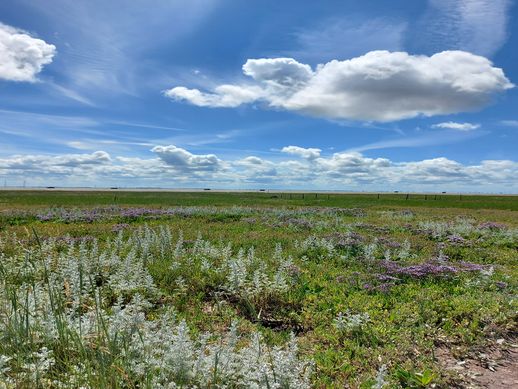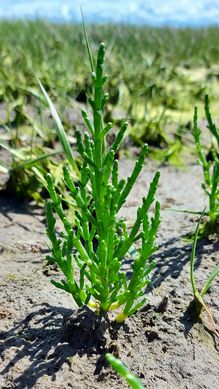Contact
Principal Investigator
Research Assistant
Subproject 2
Plant biotic interactions under disturbance in the salt marsh
Organisms in the salt marsh face a particularly dynamic environment with up to four changes per day between flooding and physiological drought. For plants, the effect of such disturbance on communities and functional traits have been well studied. However, interactions are at best considered as competition with other organisms of the same trophic level. Mutualistic interactions are mostly ignored. The most commonly studied form of this type of mutualistic interaction is that between plants and mycorrhizal fungi.
In subproject 2, we focus on the symbiosis between plants and fungi as a tolerance trait in thesalt marsh.The salt marsh is a dynamic environment that is subject to inundation and drought cycles and is characterized by fluctuations in oxygen availability and salt concentration along an elevation gradient. Under these conditions, the organisms living in the salt marsh are required to possess certain tolerance mechanisms that enable them to thrive under low oxygen availability or increased salinity. One strategy that salt marsh plants have evolved is the symbiotic association with Dark Septate Endophytic (DSE) fungi (facultative biotrophs) and arbuscular mycorrhizal fungi (obligate biotrophs). Although these fungi are not easily visible in the salt marsh, they play essential roles in the ecological performance of plant species by influencing nutrient uptake and tolerance to abiotic stress. Since DSE fungi are known to possess remarkably heterogeneous genetic traits, depending on multiple factors like host identity, host age, or environmental parameters, the fungal partners may behave as beneficial or harmful symbionts. Thus, the fungal lifestyle may range from parasitic to mutualistic and even exhibit saprophytic behavior in different circumstances. This symbiotic spectrum might even be observable at the individual level and may be influenced by fungi-fungi interactions among taxa that co-occur with the same host. The complexity of these symbiotic systems makes it a challenging task to elucidate the functional contribution of fungi to the ecological stability of the salt marsh and we are working towards this goal.
In the first phase of DynaCom, we demonstrated the spatial and temporal variation of the fungi living in association with the salt marsh vegetation. Using controlled conditions, we also showed the effects of single and mixed inoculations on plant performance under various salinity parameters. In phase 2, we want to understand better how plant-fungi symbiotic interactions operate in vivo in the salt marsh. To accomplish this, we will combine field experiments and
greenhouse experiments to study the effect of salinity on the symbiosis between Salicornia europaea and associated fungal partners using metatranscriptomics. Thereby, we will gain insights of the fungal functional diversity from a molecular perspective and will be able to decipher the underlying mechanisms of salt tolerance in the symbiotic partners. Furthermore, in phase 2 and in collaboration with SP1 and SP3, we will study the spatial distribution of roots in the salt marsh and intensify the study of plant-animal interactions using metabarcoding and eDNA approaches to broaden our understanding of the salt marsh food webs.



